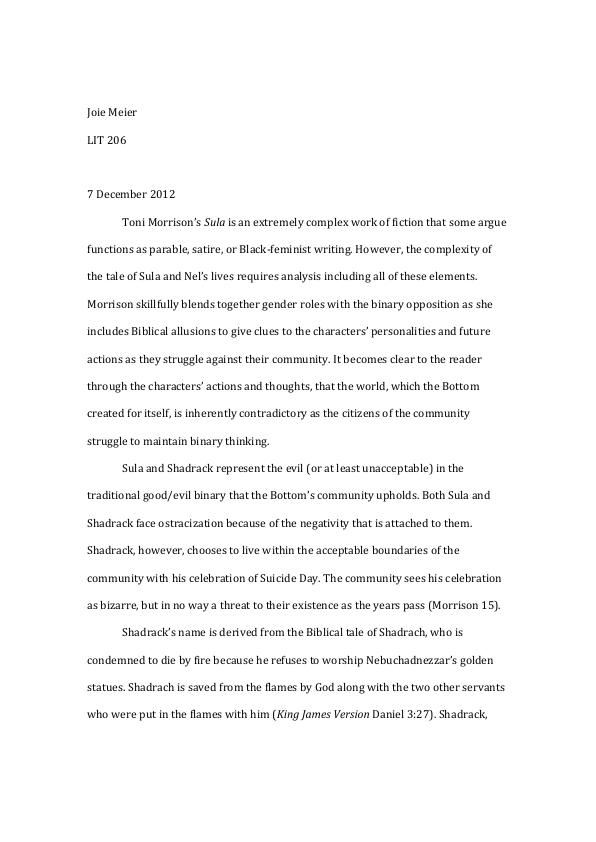

In short, names are never accidents: ironically, they always say something about who’s doing the naming.īut even if names reflect the namer’s own thoughts and desires, the name he or she chooses also exerts real, tangible power over the thing being named. Jude Greene thinks the birthmark looks like a snake, perhaps reflecting his sexual desire for Sula, while Shadrack thinks the mark looks like a tadpole, symbolizing his fishing and his infantile mind.

Each character gives a different “name” to the birthmark, and the names could be said to reflect the character’s innermost thoughts and behaviors. Morrison makes it clear that the act of naming is enormously important, and always reflects the power and personality of the “namer.” For example, throughout the novel various characters are given the opportunity to “name” one important and ambiguous sign: Sula Peace’s oddly shaped birthmark. The novel documents some of the ways that signs can be powerful, and how this power can be used and abused.

From the first pages of Sula, it’s clear that signs and names carry a huge amount of power.


 0 kommentar(er)
0 kommentar(er)
